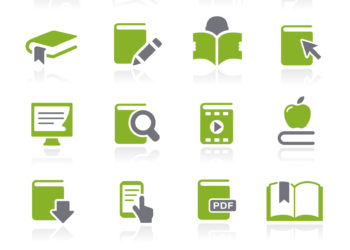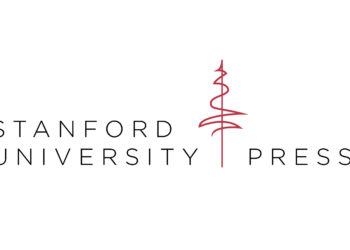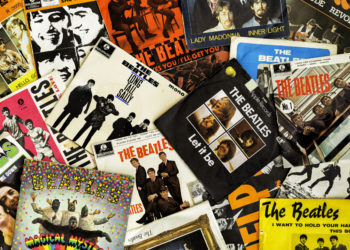This is the second of two posts on the roles of e-books in scholarly publishing, focused on how e-books fit into the mission and the business model of university presses. Last week I reviewed some of the basics around scholarly e-books; today we’ll get into more detail.
As mission-driven, not for profit organizations, university presses are dedicated to the production and dissemination of scholarship. It is expensive work, and like all publishers, university presses earn money from a few titles to afford the entire list; unlike commercial publishers, the amount earned on those few can rarely fully offset the costs of the full enterprise. Balancing the books, as it were, often comes in the form of endowment (for larger presses such as Harvard, Yale, and Princeton) and budgets from universities (such as at Stanford University Press).

For the field of scholarly communications, it’s important to understand where university presses stand in relation to commercial publishers, but also the space that books occupy as opposed to journals. The production and consumption cycle for books is different than it is for journals. Books play a very different role in some fields than in others; for some fields books remain a critical, even apex scholarly form, whereas for others books are marginal. The economics of book and journal publication are different. Library acquisitions for books and journals are different. And on and on.
It seems straightforward to observe these fundamental differences, which isn’t to say that there are not important similarities we can learn from. But as the high volume, high dollar journal-driven fields continue to dominate a lot of the economics and policies in scholarly communications, it is worth continuing to draw attention to these distinctions. The differences explain a lot about why ambitious policy/aspirations such as open access can stumble without sufficient attention to them. And, with respect to David Crotty’s post last week on the necessary attention to business models up and down the line in scholarly communications from funders to organizational leadership, it’s also worthwhile to attend to these distinctions given the up tempo, clearly much-needed pace of experiments around book publishing.
So let’s dig in. I asked two university press directors, Lisa M. Bayer of the University of Georgia Press, and John Sherer of the University of North Carolina Press, to join me in addressing some of the developing issues around scholarly e-books. I posed a series and questions, John and Lisa offered some back and forth, and then I posed a few follow-ups.
How important are e-book sales from e-readers (Kindle sales) versus academic libraries (JSTOR, etc.) for your list, and how has this changed over the last ten years?
Lisa Bayer (LB): Given that our mission as a university press is to share peer-reviewed knowledge as broadly as possible, I’d say that all our formats, including consumer e-books and library aggregation, are important. Kindle is far and away our largest consumer e-book account, and we’ve been pleasantly surprised at the variety of subject areas that sell through Kindle, from creative nonfiction and short fiction to scholarly monographs on history and environmental studies. We distribute our scholarly books to libraries via all the available aggregators, including Project MUSE, JSTOR, EBSCO, and ProQuest. The usage is more evenly spread across those vendors because libraries like choices. Ten years ago, Kindle (est. 2007) was the new cool kid, and musty old print was being declared out in the midst of the Great Recession. University presses didn’t yet have the trusted not-for-profit aggregators Project MUSE (launched with University Press e-Book Consortium in 2011) and Books at JSTOR (launched in 2012), both of which were game changers for global distribution of our digital content to research libraries.
John Sherer (JS): The latest stats from the Association of American Publishers suggest that digital sales are only 12% of the overall revenue for American publishers. At UNC Press, our overall digital revenue accounts for about 18% of all book revenue, and that’s evenly split between what we call consumer channels (Kindle, iBookstore, Nook, etc.) and institutional channels (JSTOR, MUSE, Oxford Scholarship Online, EBSCO, etc.). But our trade and general interest books make up a lot of the consumer channel sales. For our monograph list, the revenue is skewed much more heavily to institutional channels. I think 10 years ago we all imagined we were converting from vinyl to CD and we’d sell e-books instead of print books. But we were actually going from vinyl to Spotify, with a robust market for analog.
I think 10 years ago we all imagined we were converting from vinyl to CD and we’d sell e-books instead of print books. But we were actually going from vinyl to Spotify, with a robust market for analog. –John Sherer
Do you see e-book sales as a complement to print; why or why not?
JS: It’s not as much about digital sales as it is about discoverability. In that way, it is very complementary. For our monographs, we see aggregation platforms as vital to the how scholars find our books at the moment when they are doing research. There’s a growing awareness that scholarly research (even in the humanities) begins digitally, but then scholars tend to pivot to print when they do immersive reading. If we make the digital edition discoverable, we’re likely increasing our chances of getting a print sale. This is one of the rationales behind the Sustainable History Monograph Pilot. What happens to print when digital is available first and for free? Does print get cannibalized by free, open digital. Or does free, open digital lead to more print activity?
LB: Rather than a complement, which might imply subsidiary, I see e-books and aggregated digital content as equally important to print for scholarly books. For complex and diverse reasons, monographs are much less likely to be purchased in print editions by research libraries, especially given the enhanced accessibility, portability, and discoverability that digitally delivered content affords. When we send our content to aggregators, we join a huge network of scholarly publishers reaching thousands of institutions worldwide: that is mission-critical. At one of the last O’Reilly Tools of Change for Publishing conferences I heard a smart person say, “The page is no longer primary.” For most of our customers, print books are still primary. But university presses operate in a file-based ecosystem, increasingly so with Open Access pilots and platforms such as Manifold, PubPub, Fulcrum, Humanities Open Book, and the Sustainable History Monograph Program.
Do you have a sense that e-books, particularly the chapter disaggregation, is serving classrooms in ways that book sales are not?
LB: Chapter usage is difficult to parse from the reports provided by the aggregators. It’s such a small part of our overall business that we don’t have the time to look at line item usage by title. We’ve seen monograph sales decline, and aggregator sales have not made up that decline, so there’s not a one-to-one correspondence. But if I were an instructor who wanted to use a single chapter of a history monograph that was available online via my library’s fee-for-usage license, I’d assign it that way if my library paid for that level of access. University presses’ primary goal is to advance knowledge by making content widely discoverable, which also should mean giving users and readers choices with regard to how they want to engage with it.
JS: We see evidence that books which tend to be the most successful — that win awards and get reviews and sell in print — are also being consumed at the chapter level. But I don’t think it’s zero sum. Books that make an impact are finding readers through many different pathways. What is rare is to see a book that thrives digitally but doesn’t also do well in print. It’s happened for a few high-priced reference items, but not for monographs.
What are the economics of e-books, for the press and for authors? (I realize there is some information you can’t provide – but generally, based on your experience?)
JS: The economics for consumer sales are more favorable than print. We don’t have to manufacture, store, and ship a copy. There are almost no returns and no inventory obsolescence. And a Kindle sale on a royalty statement probably looks straight forward to an author. But transactions with aggregators can vary from an e-book being part of a large subject collection sold to a library or a library system; or residing in a Patron-Driven-Demand pool. And we don’t have enough space for me to explain the economics of Evidence-Based-Acquisitions models. Then there are chapter downloads. Single-user sales. Unlimited user sales. Do you want to talk about time-limited rentals? Non-linear lending? It goes on and on. Some transactions are at two-to-three times the list price of the book. But many transactions are literally pennies. There are some reports we receive where it costs us more to process the royalty accounting than the money we’re receiving. I won’t pretend to be able to explain it all and so it’s probably justifiable that some authors are flummoxed by it.
The most significant expense of scholarly publishing is the front-end human work of content acquisitions, development, peer review, editing, design, layout, and marketing/discoverability –Lisa Bayer
LB: I’ll start with an important finding: the most significant expense of scholarly publishing is the front-end human work of content acquisitions, development, peer review, editing, design, layout, and marketing/discoverability. The average expense to produce the file is just shy of $40,000 (see the Ithaka S+R study on the cost of publishing monographs). At the same time, e-book/digital sales make up about 12 percent of our overall net sales. Print is still primary sales-wise, which can be explained by John’s Spotify analogy above. It’s not a one-to-one comparison. We pay authors a royalty on all sales earned whether print or digital. The channels and choices are many and varied, which is why we use one distributor, Ingram’s CoreSource, to send our e-book files to nearly fifty vendors. Owing to a recent public discussion on social media with an author who was surprised to find her book available as full text via JSTOR, we clearly need to do a better job of informing authors, especially in the academy, of the rapidly changing landscape of digital content aggregation (which is one reason I’m so appreciative of the opportunity to contribute to this blog post).
Are there specific successful examples you would point to in terms of the e-book market and use?
LB: Not a specific title, but I can mention a couple of our globally-focused book series. The titles that we publish in Geographies of Justice and Social Transformation and Studies in Security and International Affairs would have much less impact if they were not available digitally via aggregators that reach a global research audience. Partners like JSTOR, Project MUSE, and others are absolutely critical to enabling university presses to share peer-reviewed knowledge beyond relatively privileged “developed” markets, especially via their Open Access programs.
What are other issues you see as key to e-books?
JS: I’ll simply add that we’ve been very liberal at UNC Press about participating in digital dissemination models, which means I have no one but myself to blame for the complexity I’ve described above. What I should probably find is a better way of saying to my authors that we’re still in a period of experimentation where we’re trying to understand how it all works. But our default is to err on the side of over-distributing the digital editions of our books. When a student can read an e-book for “free” or when a scholar can download an e-book from their library at 2:00 am in the morning by simply pressing a button, we see that as a positive thing. It’s not the best way to maximize revenue. You need to try to create artificial scarcity to do that. But since dissemination is in our DNA, it never occurred to us to make it hard for people to read our books.
One more item has come to mind which is not so much about the direct economics of e-book sales, but the potential value of having our book (and journal) scholarship available within large digital networks of humanities scholarship. JSTOR, in particular, has begun developing some tools (like Text Analyzer and TopicGraph) that let scholars use machine learning and AI to do new types of research in the humanities. Our monograph output needs to be semantically tagged and available in these networks, in order to be visible to this type of researcher. I realize it’s not how many scholars do research now, but it’s hard to imagine that it doesn’t become more relevant in the future. This type of impact and relevance is likely to be appealing to those in control of the budget dollars of the future.
LB: This conversation has shown there is a growing movement among scholars, universities, governments, and assorted funding agencies to move to more Open Access publications: free to readers, but decidedly not free to produce. The challenge and opportunity for university presses is to continue exploring and explaining the real costs of publishing (cf. ITHAKA etc. above) and maintaining the budgets to sustain that publishing mission.
The challenge and opportunity for university presses is to continue exploring and explaining the real costs of publishing and maintaining the budgets to sustain that publishing mission.–Lisa Bayer
As Lisa, John, and I emailed about this post, we wondered if a follow up directly aimed at “what authors should know about e-books” and a discussion with a couple of the big aggregators would be helpful. In the meantime, the Association of University Presses is in the midst of revamping their website guidance, but the current material can be found here. Project MUSE’s guidance for publishers, which explains their mission and offers a brief introduction to process is here.
There are other issues around the aggregator platforms that are worth thinking through in more detail. An advantage to the aggregators is the kinds of data mass that allow for developing digital research methods. But we could explore in a bit more depth how life beyond the aggregators might look. Charles Watkinson of the University of Michigan Press shared with me that their experiment with an independent platform for offering their e-pubs is going very well, and that among the best aspects of that venture is the opportunity to work directly with libraries to provide the content each one most desires or requires.
[Disclosure: The University of North Carolina Press is the Omohundro Institute’s press partner for books; all OI books are published with what John Sherer described above as “very liberal” e-dissemination.]
Discussion
4 Thoughts on "Scholarly E-Books and University Presses – Part Two"
This was very helpful for me, an acquisitions librarian whose subject background is NOT in the humanities, to understand more about the economics of university presses. I had no idea that non-scholarly books were such an important part of upresses’ revenue. I very much appreciate the comments that these presses put discovery/distribution ahead of short-term revenue goals because that certainly aligns better with the problems and choices facing us libraries. Regarding chapter use data, I think you’ll find once we have a full calendar year of the new COP5 COUNTER data for books, you’ll have much better data available about chapters. I encourage all ebook platforms to start to support the optional IR reports which would provide data at the chapter title level. While the IR was mainly meant for other kinds of platforms (eg institutional repositories), it could certainly be used to provide the data that upresses need, and maybe JSTOR and Project Muse in particular could be persuaded to use it for such.
Thanks for your comments, Melissa, here and on the first post. I know there are at least two (actually, now I can count three) additional posts we could do and at least one already in planning stage.
Part of what’s so terrific is that we can dig into some of the biggest questions about scholarly communications from so many angles –reader, consumer, author, publisher, platforms, libraries– all without recurring to STEM journals as default/ normative.
Thanks, Karen. I just want to add that there is a serious effort under way to deal with the funding problem for monographs. TOME (Toward an Open Monograph Ecosystem) is the first initiative that brings together multiple national organizations (AAU, ARL, AUPresses) in an effort to “flip” the system so that university presses can continue to publish monographs. The key concept in TOME is to ensure that publishing costs are met by university-funded grants and other revenue sources rather than the shrinking consumer market for print books. These publication grants enable open access publishing and send a strong signal to humanities and social sciences faculties that universities value and wish to promote their scholarship.
The expanded dissemination of scholarship within and beyond the academy advances the core mission of universities to create and transmit new knowledge for public benefit.
Very “informative”, knowledgeable piece of information on e-books and its aim in widening the spread of knowledge the world over. Thank you so much.



